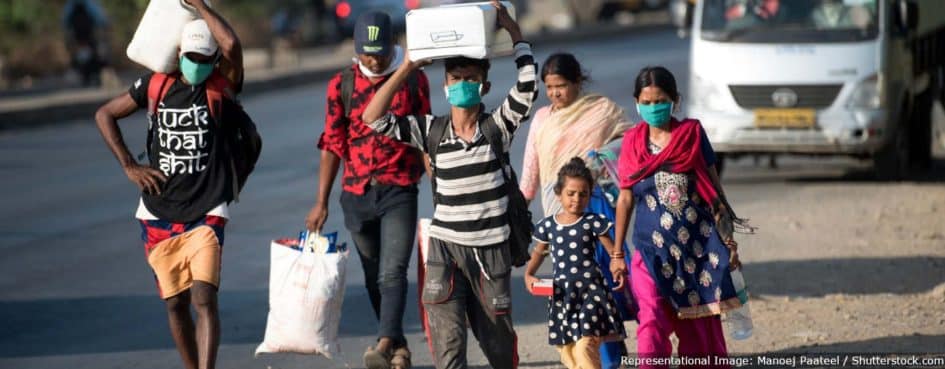By Sanjay Jog & Swapnil Mishra

FPJ Exclusive: Cases migrate to rural areas; Mumbai-Thane-Pune-Nashik industrial belt is new epicentrePhoto Credit: PTI
The Maharashtra government’s move to extend the lockdown with strict curbs until the midnight of July 31 comes in the wake of the locus of the coronavirus infection shifting from urban to rural areas, as migrants move from the city to their homes.
The government’s internal assessment shows that the Mumbai-Thane-Pune-Nashik industrial belt has now emerged as the new epicentre for Covid-19. The rising number of cases in other industrial areas such as Jalgaon and Nashik district, including the powerloom town of Malegaon in North Maharashtra, Solapur, Akola and Aurangabad has put these regions under the government radar.
What Mumbai has ‘lost’ in terms of the number of cases has been picked up by the industrial belt. Areas which were hotspots just a month ago, are seeing a slower growth of cases, while areas not affected earlier are reporting a spurt.
Data provided by the state health department for the last one month shows that Maharashtra has witnessed a 151 per cent spike in Covid-19 cases. Districts like Dhule, Sindhudurg, Jalgaon, Nandurbar, Aurangabad, Nagpur, Nashik and Solapur, among others, have recorded an almost 200 to 700 per cent rise in the number of cases until June 29, resulting in more than 5,000 new cases being recorded on a daily basis across Maharashtra. Cases in the Mumbai Metropolitan Region (MMR) region too have increased by 500 per cent. Health experts and district health officers have attributed this rise to the lockdown relaxation, immigration of migrant workers and the surge in testing.
Until May 31, Dhule had reported 140 Covid-19 cases on which further increased to 1,032 cases on June 29, a rise of nearly 637 per cent. Similarly, Sindhudurg had only 33 cases, which surged to 233 in the same period, and in Jalgaon, this number increased to 3,301 from 616 for the same period. In Washim and Nagpur, the increases were a whopping 1,175 and 1,522 per cent respectively, while in Nandurbar it was 394 per cent, followed by Jalna (328%), Buldana (268%), Nashik (262%), Ahmednagar (252%), Aurangabad (240%), Sangli (228%), Nanded (208%), Solapur (194%), Osmanabad (183%), Pune (167.48%) and Latur (156%).
(May 31- June 29)
Dhule- 637%
Sindhudurg- 560%
Jalgaon- 436%
Nandurbar- 394%
Jalna- 328%
Buldhana- 268%
Nashik- 262%
Ahmednagar- 252%
Aurangabad- 240%
Sangli- 228%
Nanded- 208%
Solapur- 194%
Osmanabad- 183%
Pune- 167.48
Latur- 156%
In Dhule, people were infected in the process of trying to provide food and water to the migrants on the Mumbai-Agra highway. “Though it was noble of them to help the migrants, in the process, 45 people contracted the infection. This was just the beginning and soon, it started spreading among others,” said District Health Officer Dr Shivandra Shagle.
According to a public health department official, ”Mumbai, Thane, Pune, Vasai-Virar and the Kalyan-Dombivli Municipal Corporation areas together account for more than 46% of the cases in the state. At the same time, Pune-Thane-Mumbai-Nashik urban belt continues to be a major contributor to new Covid-19 infections, accounting for over 50% of the new cases.” He informed that larger municipal corporations continue to make large contributions to new cases.
Mumbai University Professor Neeraj Hatekar, who has been carrying out a daily analysis of Covid-19 crisis from March, said Mumbai was an outstanding contributor and it was single handedly generating more than half the cases.The remaining cases were distributed more or less evenly across the state. ”However, now the share of the Brihanmumbai Municipal Corporation in fresh cases has dropped. New cases are now being reported from the industrial belt comprising Mumbai, Pune, Thane, Nashik belt. The locus of new infections is now shifting and the district and civic administration will have to step up their implementation of containment strategy there,” he noted.
Public Health Minister Rajesh Tope admitted that the migration of people from Mumbai to various districts is leading to a surge in cases. ” I have instructed the district and civic administration to replicate the Mumbai model of tracing, tracking, testing and treatment in industrial and non industrial areas to curb spurt in Covid-19 cases,” he noted.
State Surveillance Officer Dr Pradip Awate said there were many factors responsible for this rise. “Earlier, most cases were recorded from Mumbai and Pune, but since June, the SARS-CoV-2 virus has shifted to the outskirts of Maharashtra, causing a surge in numbers. Until May, we had eight orange and five green districts, but now, we only have orange districts,” he said. “In the last one month, more than 30 districts in Maharashtra have reported more than a 100 per cent rise in cases,” Dr Awate added.District health officers (DHO) said the rise in cases across the state would not have occurred had it not been for the lockdown relaxation and increased testing. Migrants returning to their villages is the main reason for the surge, they feel.“All these districts which have witnessed more 100 per cent rise in cases, as nearly 60 per cent of migrants who entered these districts from Pune, Mumbai and other parts, and most of them are asymptomatic and are carriers of infections,” said a DHO.

Leave a Reply